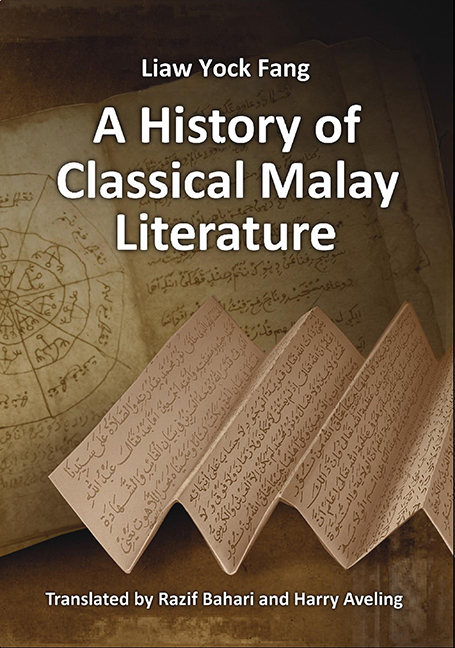Book contents
- Frontmatter
- Contents
- Preface
- List of Abbreviations
- Chapter I Folk Literature
- Chapter II The Indian Epics and The Wayang in Malay Literature
- Chapter III Javanese Panji Stories
- Chapter IV Literature Belonging to the Period of Transition from Hinduism to Islam
- Chapter V Literature of the Islamic Age
- Chapter VI Framed Narratives
- Chapter VII The Literature of Islamic Theology
- Chapter VIII Historical Literature
- Chapter IX Classical Malay Law Codes
- Chapter X Poetic Forms (Pantun and Syair)
- Bibliography
- Index
- Biographical Details
Chapter II - The Indian Epics and The Wayang in Malay Literature
Published online by Cambridge University Press: 21 October 2015
- Frontmatter
- Contents
- Preface
- List of Abbreviations
- Chapter I Folk Literature
- Chapter II The Indian Epics and The Wayang in Malay Literature
- Chapter III Javanese Panji Stories
- Chapter IV Literature Belonging to the Period of Transition from Hinduism to Islam
- Chapter V Literature of the Islamic Age
- Chapter VI Framed Narratives
- Chapter VII The Literature of Islamic Theology
- Chapter VIII Historical Literature
- Chapter IX Classical Malay Law Codes
- Chapter X Poetic Forms (Pantun and Syair)
- Bibliography
- Index
- Biographical Details
Summary
Two thousand years ago, trade relations were first established between India and the Malay world. Many Indian traders made a stopover in Sumatra and the Malay Peninsular on their way to China. The region along the coast of the Straits of Malaka was a vital lifeline for trade and commerce. A large part of the population were involved in these international trading activities. Under the influence of the Indian traders or the local populace who were themselves influenced by Indian culture, small kingdoms emerged in the area. Many of these kingdoms were located in the northern part of Malaya, such as Langkasuka and others. After Buddhism was founded in India, even larger numbers of Indians travelled to or stopped over in parts of the Malay world. Since Buddhism does not subscribe to a caste system, its followers were not hesitant about interacting with people of other races. Moreover, its followers showed a missionary zeal to spread their faith in all directions. Around 420 AD, a prince from Kashmir called Gunawarman travelled to Java and Sumatra. This explains why a large number of ancient relics found in these areas include Buddhist sculptures in the Amravati style from south India that date back to the second and third centuries CE. Many inscriptions etched in stone have also been discovered, including the famous stone tablet issued by King Mulawarman in the region around Kutai, Kalimantan in 400 A.D. Another stone tablet produced by King Purnawarman, the king of Taruma around Bogor, West Java, originated from a later period, circa 450 A.D.
Hindu influence, on the other hand, permeated throughout the Malay world over a longer and more sustained period of time, in a peaceful manner. A ship anchored at a Malay harbour. Its crew of Indian traders were astute enough to win the trust of the local Malay rulers. Some presented beautiful gifts to these rulers, others taught them the magic arts which could cure illnesses or defeat their formidable foes.
- Type
- Chapter
- Information
- A History of Classical Malay Literature , pp. 49 - 112Publisher: ISEAS–Yusof Ishak InstitutePrint publication year: 2013



